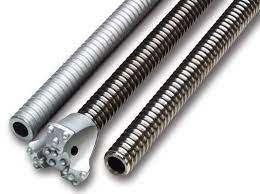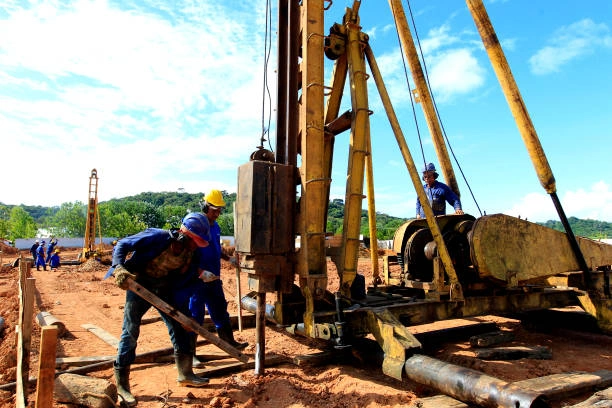In the world of construction and manufacturing, fastening materials together is a fundamental task. Traditionally, creating a secure connection often involved the time-consuming process of drilling pilot holes before inserting screws. This two-step approach not only slowed down projects but also required additional tools and effort. Enter self-drilling screws, also known as TEK screws, a groundbreaking innovation that has transformed the way we think about fastening.
Self-drilling screws are designed to eliminate the need for pre-drilling, allowing for a one-step installation process. This simple yet revolutionary feature has made them a popular choice across a wide range of industries, from construction and manufacturing to automotive and HVAC. By combining the functions of a drill bit and a screw, self-drilling anchors offer significant efficiency gains, material versatility, and secure fastening, making them an indispensable component in modern applications.
What is a Self Drilling

At the heart of self-drilling screws is their unique drill point design. The drill point is typically equipped with cutting flutes, which are spiral grooves that help to remove material as the screw is driven into the surface. These flutes play a crucial role in creating a clean and precise hole, ensuring a secure fit for the screw.
The geometry of the drill point can vary depending on the material being fastened. For example, screws designed for metal applications often feature a sharp, pointed tip to penetrate the hard surface, while screws for wood may have a more rounded tip to prevent splitting. The angle and shape of the drill point also affect the cutting performance and the speed at which the screw can be installed.
How Do Self Drilling Anchors Work

In addition to the drill point, the screw thread design is another critical aspect of self-drilling screws. The threads are designed to engage with the material, providing a secure and reliable connection. The pitch and depth of the threads are carefully engineered to ensure maximum holding power while minimizing the risk of stripping or pulling out.
The synergy between the drill point and the threads is what makes self-drilling screws so efficient. As the drill point creates a hole, the threads immediately follow, threading themselves into the material. This simultaneous drilling and fastening action reduces the overall installation time and ensures a tight and secure fit.
The Mechanics of Self-Drilling Screws

Drill Point Design: Precision and Efficiency
At the heart of self-drilling screws is their unique drill point design. The drill point is typically equipped with cutting flutes, which are spiral grooves that help to remove material as the screw is driven into the surface. These flutes play a crucial role in creating a clean and precise hole, ensuring a secure fit for the screw.
The geometry of the drill point can vary depending on the material being fastened. For example, screws designed for metal applications often feature a sharp, pointed tip to penetrate the hard surface, while screws for wood may have a more rounded tip to prevent splitting. The angle and shape of the drill point also affect the cutting performance and the speed at which the screw can be installed.
Screw Thread Design: Secure and Reliable
In addition to the drill point, the screw thread design is another critical aspect of self-drilling screws. The threads are designed to engage with the material, providing a secure and reliable connection. The pitch and depth of the threads are carefully engineered to ensure maximum holding power while minimizing the risk of stripping or pulling out.
The synergy between the drill point and the threads is what makes self-drilling screws so efficient. As the drill point creates a hole, the threads immediately follow, threading themselves into the material. This simultaneous drilling and fastening action reduces the overall installation time and ensures a tight and secure fit.
Advantages of Using Self-Drilling Screws
One significant advantage of using self-drilling screws is the considerable time and labor saved by eliminating the pre-drilling step. These innovative fasteners drill their own pilot hole and fasten in a single, swift operation.
Time Savings: Streamlining the Installation Process
One of the most significant advantages of self-drilling screws is the time savings they offer. By eliminating the need for pre-drilling, self-drilling anchors can reduce the overall installation time by up to 50%. This not only speeds up projects but also increases productivity, allowing workers to complete more tasks in less time.
Cost Reduction: Saving Money Without Sacrificing Quality
In addition to time savings, self-drilling screws can also help to reduce costs. With fewer steps and less equipment required, labor costs are significantly reduced. Additionally, self-drilling screws eliminate the need for drill bits and other accessories, further reducing expenses. In some cases, using self-drilling screws can even eliminate the need for additional tools, such as drill presses, resulting in significant cost savings for businesses.
Material Versatility: A Solution for Every Application
Self-drilling screws are incredibly versatile and can be used to fasten a wide range of materials, including steel, aluminum, wood, and some plastics. Different types of self-drilling screws are available for specific material thicknesses and densities, ensuring a secure and reliable connection every time. This versatility makes self-drilling anchors a popular choice across a variety of industries, from construction and manufacturing to automotive and HVAC.
Improved Accuracy and Alignment: Precision in Every Fastening
Another advantage of self-drilling screws is their ability to improve accuracy and alignment. With traditional screws, there is always a risk of the drill bit slipping or wandering, leading to misaligned holes and loose connections. Self-drilling screws, on the other hand, are designed to drill and fasten in one smooth motion, ensuring that the screw is installed directly where intended. This not only improves the overall quality of the installation but also reduces the risk of errors and rework.
Strong and Secure Fastening: Reliable Connections That Last
Finally, self-drilling screws offer strong and secure fastening, providing a reliable connection that can withstand the test of time. The threads engage directly with the material, creating a tight and secure fit that is resistant to vibration, shock, and other forces. Properly selected self-drilling screws offer excellent pull-out strength, ensuring that the connection remains intact even under heavy loads.
Best Practices for Using Self-Drilling Screws and Mining Rock Drilling Tools

In mining operations, rock drilling tools are essential for exploration, production, tunneling and ground support tasks, while self-drilling screws are also indispensable in the construction and manufacturing fields. Both are similar in many ways, and following best practices can maximize tool performance, ensure safety and efficiency during use.
Selecting the Right Tool for the Task
Whether using self-drilling screws or mining rock drilling tools, choosing the right tool is the first step. In construction, the selection of self-drilling screws needs to take into account the type and thickness of the material being fastened and the specific application requirements. For example, to fasten thin metal sheets, you should choose self-drilling screws with a smaller diameter, sharp drill tip and fine thread; while screws for thick wood require a larger diameter and stronger cutting ability.
In the mining field, the selection of rock drilling tools is also critical. According to different rock types and operation requirements, you need to choose the appropriate tools. Top hammer drills are suitable for shallow hole drilling in medium-hard rock. Their impact frequency and torque design enable them to efficiently break rocks. Down-the-hole drills are more suitable for hard rock and deep-hole operations. Down-the-hole hammers directly impact rocks at the bottom of the hole to reduce energy loss. When self-drilling anchors are used for ground support, products with appropriate anchor length, diameter, and material should be selected according to the stability and load-bearing requirements of the rock to ensure structural stability.
Using the Appropriate Operation Parameters
Correct operating parameters are the guarantee for efficient and safe operation of tools. When using self-tapping screws, appropriate drilling speed and pressure must be used. Too fast speed or too high pressure may cause screw stripping, breakage or material damage; insufficient speed and pressure will reduce installation efficiency or even fail to complete tightening. Operators should strictly follow the manufacturer’s instructions for screws and drilling equipment to adjust to the optimal parameters.
The operation of mining rock drilling tools also has strict parameter requirements. When working, top hammer drills and down-the-hole drills need to adjust the impact frequency, rotation speed, and propulsion pressure according to the hardness of the rock.
For example, when drilling into hard rock, the impact frequency and thrust pressure need to be increased to ensure that the drill bit can effectively break the rock, while in softer rock formations, the parameters should be appropriately reduced to prevent the borehole from being deflected and excessive wear of the equipment. During the installation process of the self-drilling anchor, the rotation speed and thrust force must also be controlled to ensure the verticality and anchoring effect of the borehole.
Ensuring Proper Alignment and Positioning
Accurate alignment and positioning are the key to ensuring the quality of the work. When using self-tapping screws, it is crucial to ensure that the screws are perpendicular to the mounting surface and accurately positioned. If the screws are tilted or misaligned, it will not only affect the strength of the connection, but may also cause material deformation or the screws to fail to screw in properly. In actual operation, positioning tools or pre-marking of the hole position can be used to improve installation accuracy.
In mining operations, the correct positioning of rock drilling tools is also indispensable. The angle and position of the drill hole directly affect subsequent mining and support work.
Conclusion
In conclusion, self-drilling screws are a game-changer in the world of fastening technology. They offer significant efficiency gains, material versatility, and secure fastening, making them a valuable component in modern construction and manufacturing. By eliminating the need for pre-drilling, self-drilling anchors can reduce installation time, increase productivity, and save costs, while still providing a reliable and durable connection.
As technology continues to evolve, we can expect to see further advancements in self-drilling screw technology. New materials, designs, and manufacturing processes are constantly being developed, offering even greater performance and versatility. Click on our homepage for more information.


